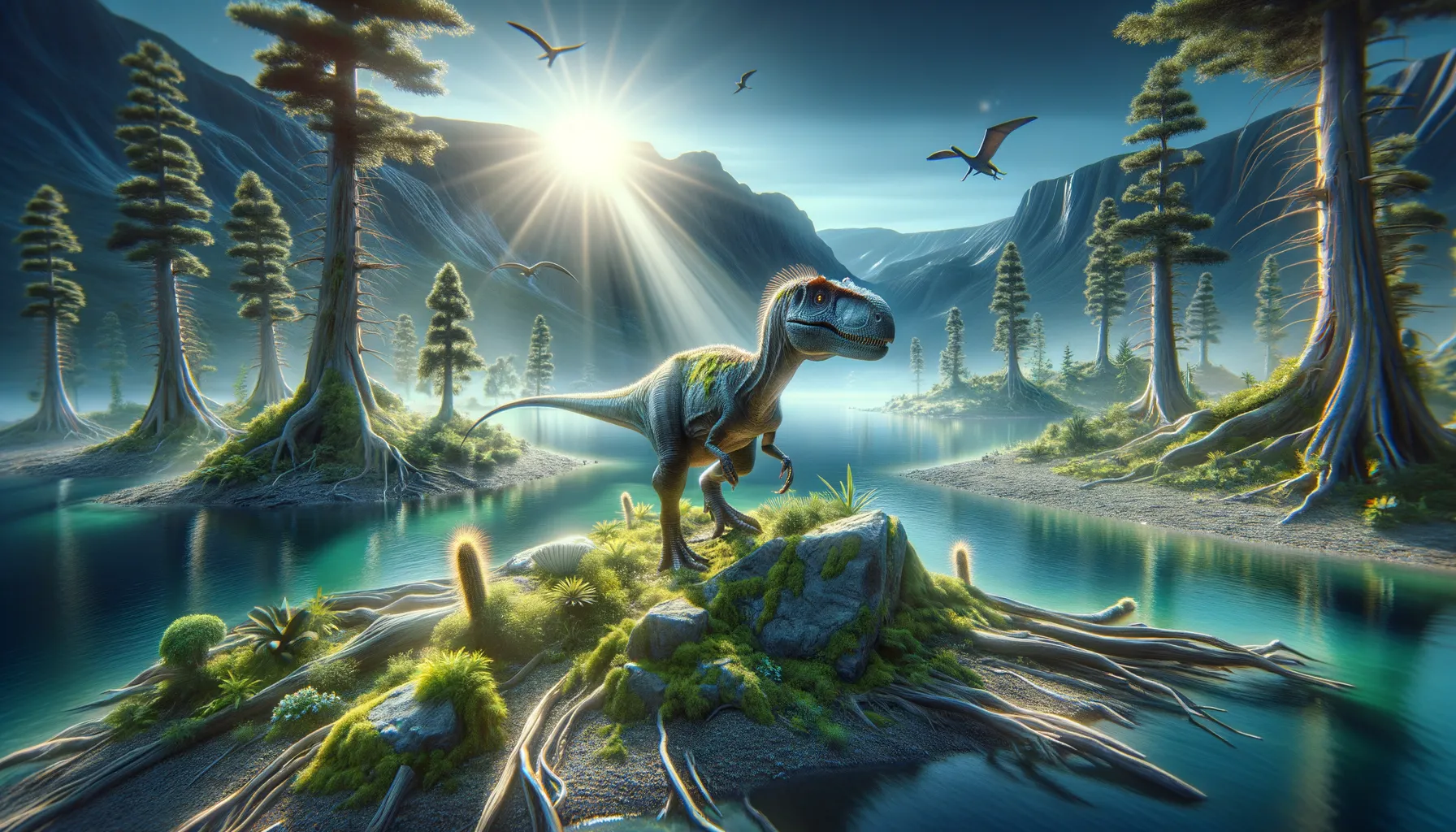
Laornis
An enigma from the Cretaceous shadows!
Period
Cretaceous
Length
Length estimates are around 2 meters.
Height
Estimated height is about 1 meter.
Weight
Laornis is believed to have weighed around 50 kilograms.
Laornis is a relatively obscure dinosaur whose incomplete fossil evidence offers a limited glimpse into its life. Known primarily from fragmentary remains, this dinosaur was identified by Edward Drinker Cope in 1870. Living during the Cretaceous period, Laornis likely showcased features typical of the time but remains largely mysterious due to the sparse fossil record. Its known dimensions suggest it was a modestly sized member of its era, though details on its lifestyle and behavior are yet to be fully understood.
Diet
The diet of Laornis is not well-documented, but being a dinosaur of the Cretaceous, it might have been an omnivore or herbivore. Without complete remains, assumptions about its diet are based on its potential ecological niche.
Hunting
There is no specific information on the hunting behavior of Laornis. If it were a carnivore, it may have hunted small animals. As an omnivore or herbivore, it might have browsed for plants or scavenged available resources.
Environmental challenges
During the Cretaceous period, Laornis would have faced environmental challenges such as climatic fluctuations, volcanic activity, and changing sea levels. These factors would have influenced available habitats and resources, possibly affecting its survival strategies. The dinosaur's adaptability to such changes would have been crucial for its persistence during this dynamic period.
Speed
Details about the speed of Laornis are not well-documented.
Lifespan
Information on the lifespan of Laornis is unknown.
First discovery
Laornis was first described by Edward Drinker Cope in 1870 based on fragmentary remains.
Fun Facts
- Laornis was a prehistoric bird-like dinosaur that lived during the Late Cretaceous period.
- The name 'Laornis' means 'stone bird,' highlighting its bird-like features.
- Despite its bird-like appearance, Laornis still had many dinosaurian traits, such as clawed hands.
- Fossils of Laornis have provided insights into the evolution of modern birds from their dinosaur ancestors.
- Laornis is known to be part of a group called Enantiornithes, which were some of the earliest birds.
- It likely lived in environments that were rich in forests and water bodies, similar to some modern birds.
Growth and Development
Due to limited fossil evidence, understanding of Laornis's growth and development remains speculative. It likely experienced growth stages similar to other dinosaurs, with juveniles developing over several years. Without adequate fossil data, precise growth rates and developmental milestones of Laornis cannot be clearly defined.
Habitat
Laornis inhabited an environment characteristic of the Cretaceous period, possibly including woodlands, riverbanks, and coastal areas. The habitat would have supported a variety of plant and animal life, offering diverse ecological niches. Adaptability to different habitats may have been essential for Laornis to thrive.
Interaction with other species
Interactions with other species are not well-documented for Laornis, but it likely coexisted with a range of other dinosaurs and prehistoric animals. Its behavior towards other species would depend on its dietary habits, size, and ecological niche. Such interactions could have included competition for resources, predator-prey dynamics, or symbiotic relationships.
Natural lifespan
The natural lifespan of Laornis is not specifically known.
Reproduction
Reproductive behaviors of Laornis are largely unknown due to limited fossil evidence. It may have laid eggs like other dinosaurs, burying them in nests. Parental care, if present, would have played a crucial role in the survival of its offspring.
Social behaviour
Laornis's social behavior remains largely speculative, akin to other lesser-known dinosaur species. It might have exhibited solitary or pack-like behaviors depending on its ecological role. Understanding its social structure relies on future discoveries that could provide insight into its lifestyle.
Fossil locations
Fossil remains of Laornis have been found in North America, offering limited insight into its distribution. These findings are primarily in fragmentary form, making it challenging to form a complete understanding of its paleobiology. The discovery of additional fossils would be needed to reveal more about its habitat range and population density.
